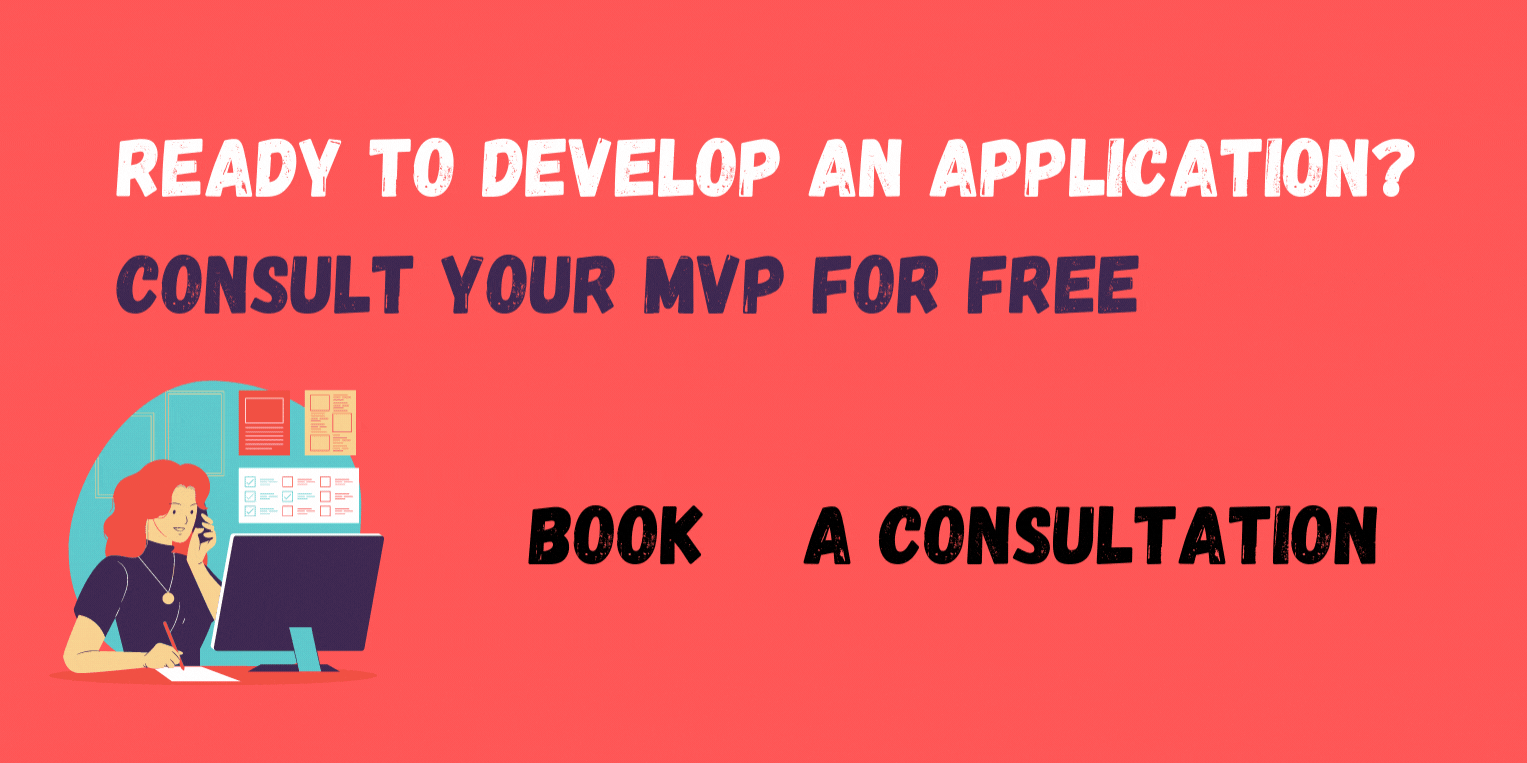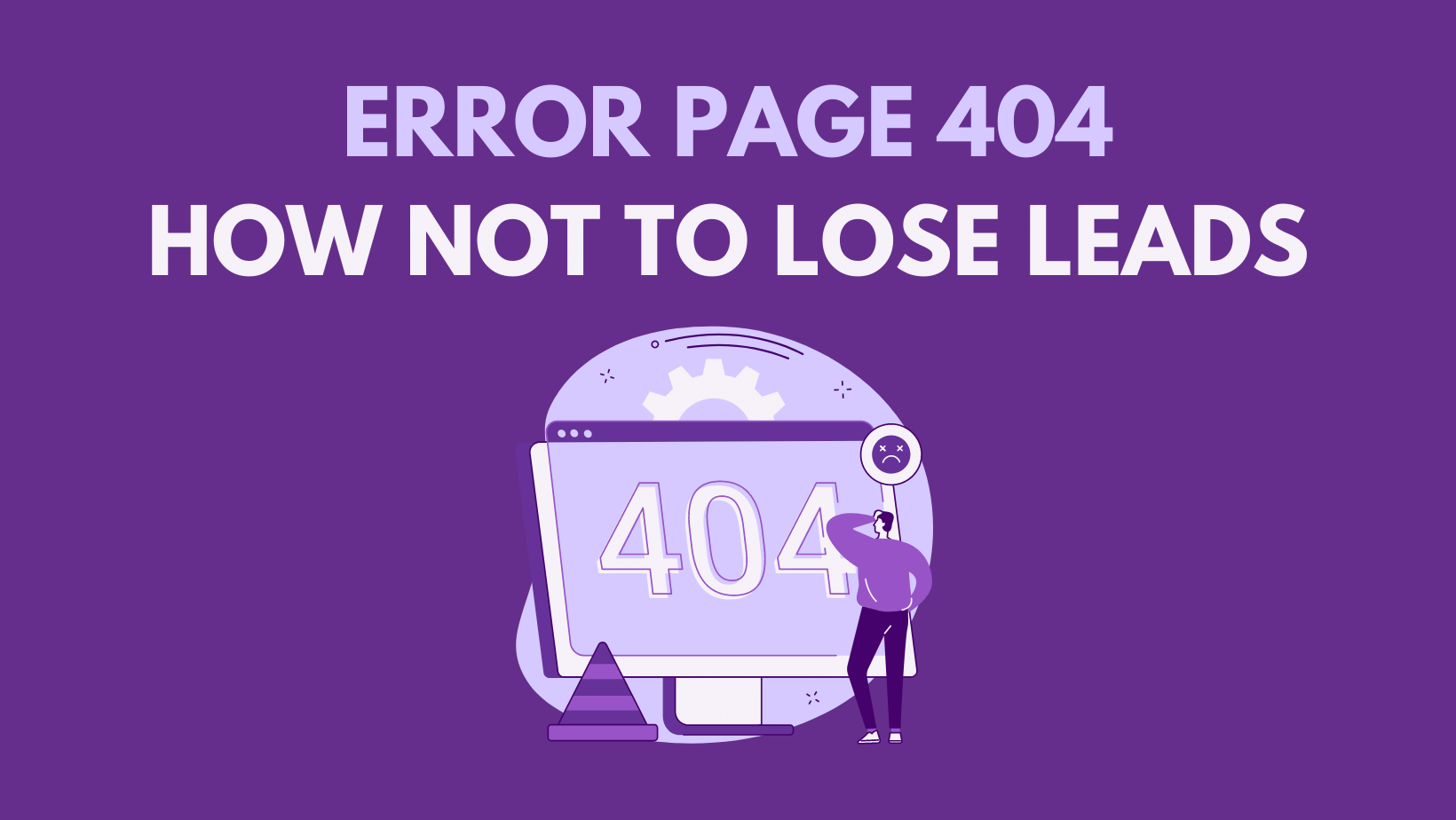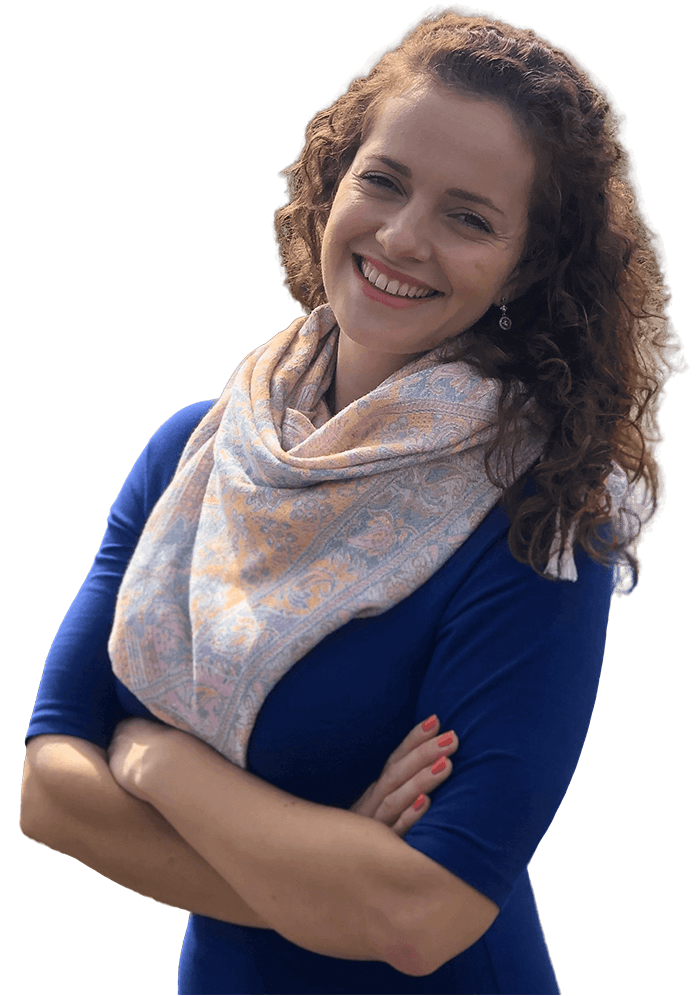How to Make an App - 5 Fundamental Steps
7 mins read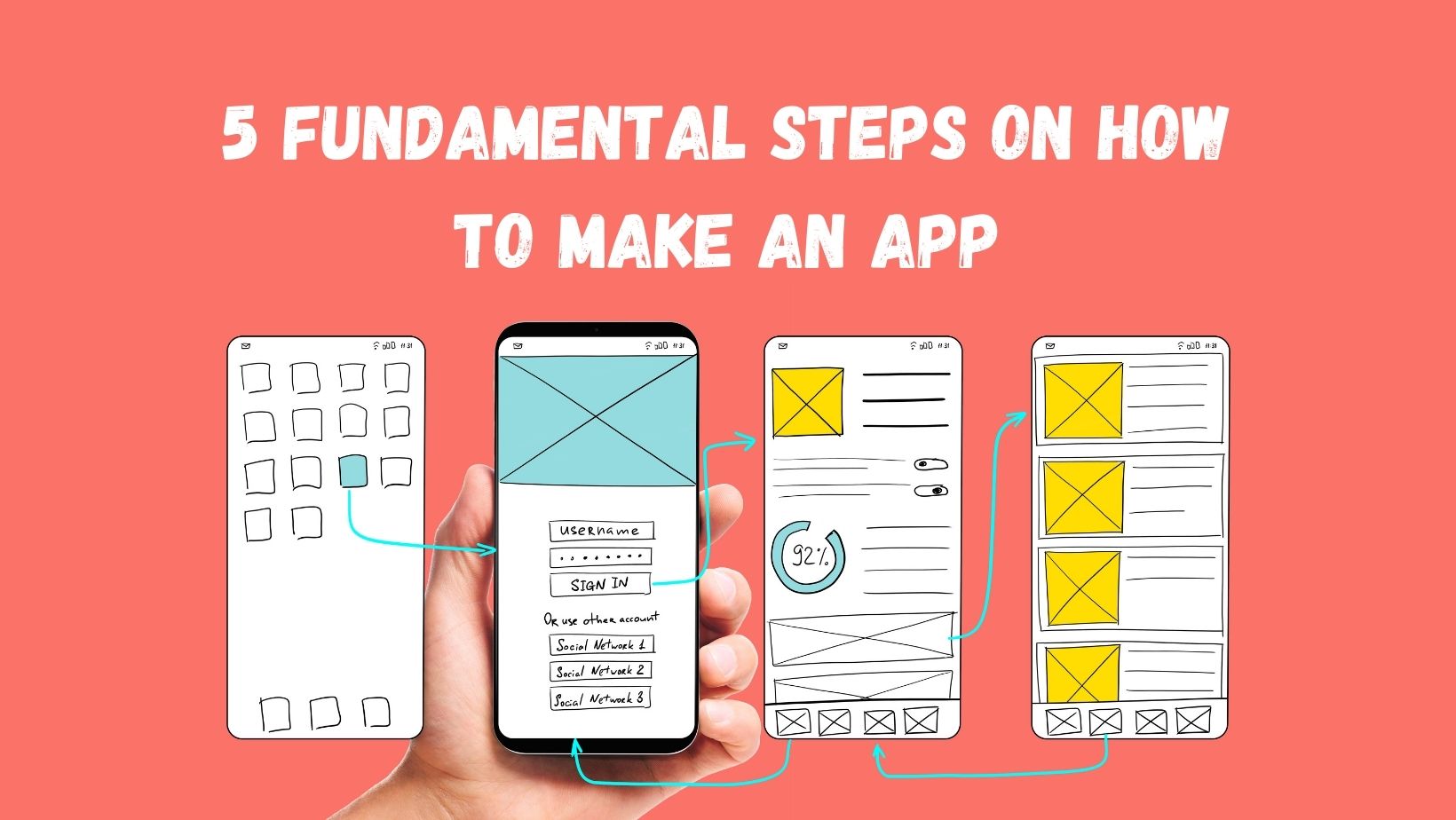
“The faster you launch your project, the faster you earn money. That's all that matters.”
Do you feel that you can’t really afford to develop your own app or website? That you would never be able to manage and organize all the complicated processes behind the app creation?
Let’s take a look at what an efficient app development process should look like and how to create a real app from zero.
In the end, you’ll find out that launching a new mobile or website application can be done smoothly and without costing a fortune. Also, that it doesn’t really matter if you build an Android app, iOS app, or even Windows application. The development process of any custom app follows 5 easy steps. Each step serves a specific purpose, but altogether, they aim at saving your money and monetizing your investment as soon as possible.
5 Steps of App Development
- The goal: Specify your idea and minimum viable product - MVP
- The goal: Make the main idea of the app/website clear to everyone involved
- The goal: Create a clear visualization of how the app will look.
- The goal: Make the user experience friendly.
- The goal: Launch the project as fast as possible without any mistakes
1. IDEA CREATION
The goal is simple. Both the business and development teams must be on the same page.
I recommend focusing on these 3 points during app development
- MVP - Minimum viable product for entry to the market
- Middle term vision (1 year)
- Long term vision (3-5 years)
Just a small reminder: Be sure that your product/project has a clear value proposition.
Long term vision
First, it's necessary to write down your long term vision. This general direction helping you to choose the right technologies for development. Also, thanks to that, you will know how many dev teams you will need in the long term and what skills they should have. Will you need an iOS, Android or Web development team or all of them?
It's important to have a plan for the functionalities and tools that you want your website or app to include, but these should be prioritized into pre-MVP and post-MVP sprints.
Middle term vision
During the creation of the middle term vision, you should take into consideration three main things:
- What will you focus on in the first year?
- How fast will you progress?
- How do you finance the whole business and software development?
Have you already answer the questions above? Perfect!
These answers help you allocate the right amount of resources from the beginning. Most probably, the highest cost will come at the beginning of the app development. On the other hand, thanks to your long term vision, you can also start preparing the data and backend for API integrations into other mobile apps which you plan to build in the next phase.
Minimum Viable Product - MVP
An MVP is crucial for a successful start. Why?
- Robustness and number of functionalities directly influence the length of the development time before entering the market. This is the phase when your budget is mostly without any income, but your expenses are quite high.
- On the other hand, trying to cut expenses as much as possible might not work either. The lack of the most important functionalities can lead to a loss of users' trust.
A lot of companies use MVPs for several reasons:
- to gather relevant feedback from the market,
- to gain initial users and find early adopters who purchase their basic product,
- to test marketing channels.
It’s always a good idea to look for external consultation on your MVP from user researchers, UX designers, and people that aren’t directly affiliated with your product and team. These people will bring an unbiased view, strong feedback, and different experiences.
Is this the end of the first phase of a website or mobile application development. The next step is sketching and one very common habit is to sketch already during the idealization. So let's jump directly to the sketching of the concept.
Contact us here to consult your project.
2. SKETCHING CONCEPT
Hand sketching is a fantastic way how to translate your ideas onto paper. A clear UX sketch unites the team. When everything is on paper, almost everyone in the company is able to imagine the app correctly and understand what they are trying to build.
What I personally recommend is to add short notes to explain the functionalities to the CEO or the people who do not live in the “development world”.
It is not necessary to have perfect shapes or a beautiful sketch. In this phase, it’s most important to understand how the app will work.
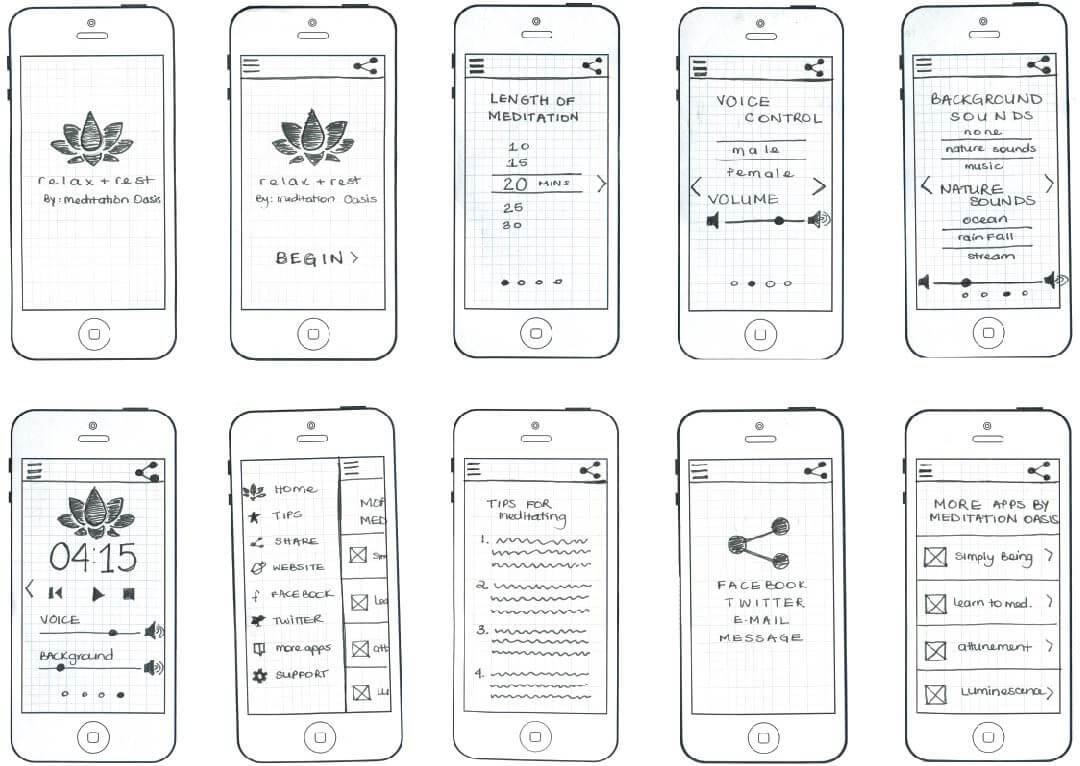

Here are some more 40 brilliant examples of sketches.
I always recommend working on sketches for three days. To have one day for the concept creation, then a rest day, and then evaluate the idea again. This phase is perfect for making adjustments because it costs you almost nothing in comparison to making changes in the next phases of development.
When you have agreed on the main concept, it’s time to move on.
Tip: If you want to learn more about sketching, there is a great course on Udemy.
Note: a sketch is mostly for the business or product owners to confirm the idea for the whole team.
3. WIREFRAMING
Wireframes are normally created by a UX designer as a template for graphic designers to add the graphic elements. Great wireframes should be much more detailed than sketches and with more screens.
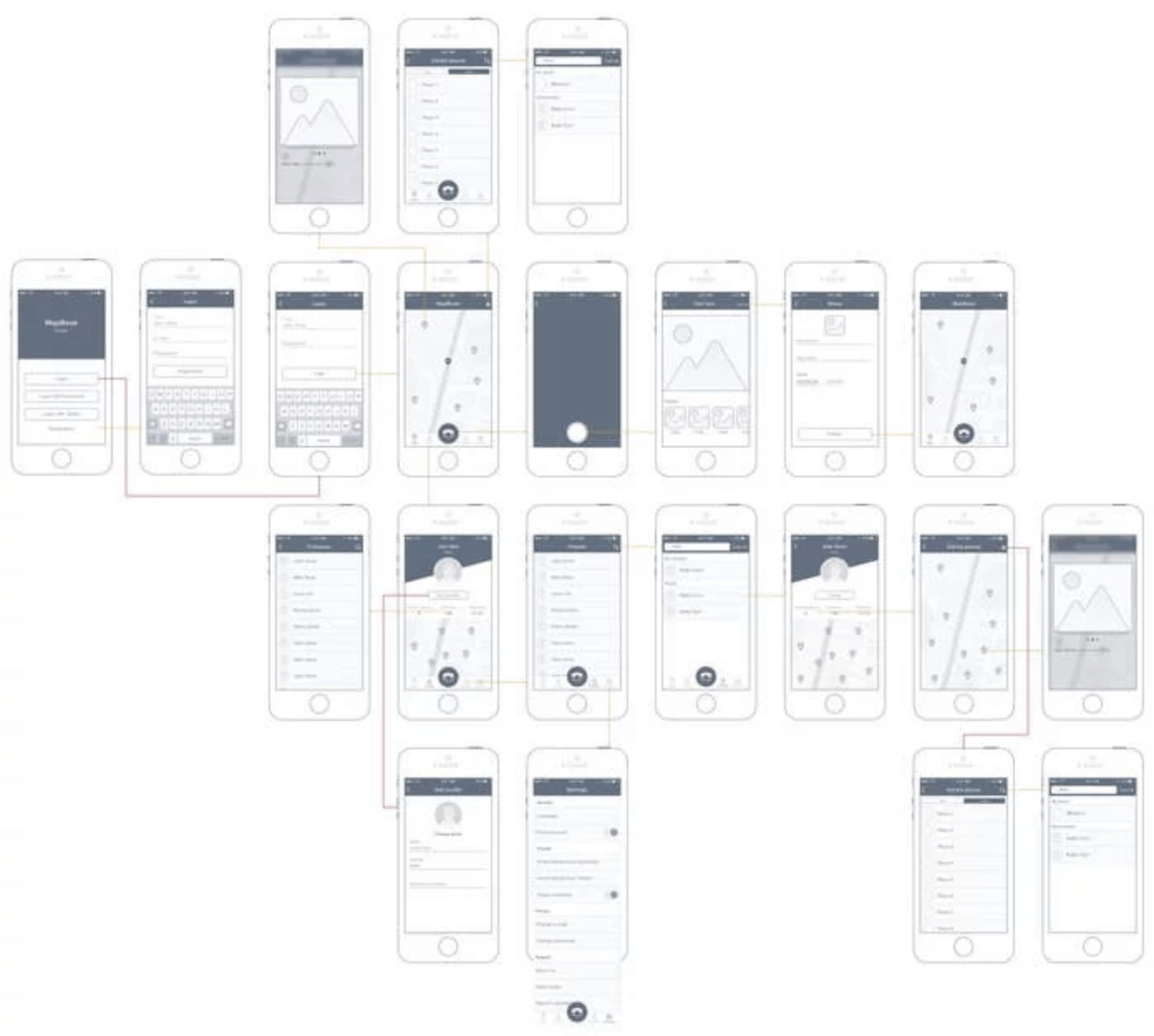
Why is wireframing so important, especially for bigger projects?
- Wireframing reduces the overall cost of the project. During this process, you can still easily adapt or change the interactions of your page with 0 budget spent on graphic design, coding, and programming.
- Clear visualization of what every element and screen will do. It is much easier to specify the action visually with wireframes rather than only a word document.
- Wireframes protect you from unwanted surprises. Have you ever had a misunderstanding with a web designer or worse with software developers? Proper wireframing makes it easy to avoid that problem.
- You can begin testing with your target audience. The sooner you get feedback from potential customers the better.
A UX designer should work on your wireframes and consult with the product owner to minimize misunderstandings of functionality and purpose of both mobile and website applications.
In some cases, such as smaller projects, you can skip directly from sketching to graphic design. It always depends on the quality and clarity of the sketch. Be aware that each change made in the graphic design process is more expensive than changes made during wireframing or sketching.
Note: Wireframes are created especially for graphic designers because you want to ensure that the whole user journey will be perfectly smooth.

4. DESIGNING THE GRAPHICS
The goal of a graphic designer is to catch the users attention emotionally and support their smooth user experience. Secondly, the designer’s goal is to create a visual consistency across your whole project.
Airbnb is a very nice example of how to build a visual language. Here is a sample of how they do it.:

It is very important is to have a font size that is legible and buttons have to be purposeful and clear as to what will happen when clicked. Create enough space between elements - especially on mobile - some people can have really huge fingers.
What are some other tips for design?
- Illustrate active and inactive elements and the difference between them.
- Illustrate motion effects and how it will change after an interaction.
- Illustrate buttons and always use the same style so users always know that this element is clickable.
- Stay with one graphic style and do not mix 2D with 3D if there is not a special meaning behind it.
- If you use shadowing, keep it the uniform across the web.
Tip: Find out more about Visual hierarchy on Interaction design.
Finally, we have the design! So let's code!
Note: Graphic design is mostly for coders and developers to know exactly what they will really do.
5. CODING AND PROGRAMMING
For launching any application, I prefer to code the frontend but program only the most important parts of your MVPs.
Why? If you don’t focus too much on the programming, you can launch your app prototype much faster - and that's the point. The faster you know the users' reactions, the better it is for your project to begin improving…
And of course:
“The faster you launch your project the faster you earn money. That's all the matters.”
"So let's do it! Get ready to impress your first users with your brand new app!”
Now it's DONE! CONGRATULATIONS!
After the launch, a never-ending cycle begins:
- UX, UI, marketing and sales testing
- UX, UI, marketing and sales optimization
- Continuous development + adding other features
...more about that in another article. Stay tuned!
Do you feel that you would need a hand when developing an app? Let us know and we will happily assist you. As a website and app development company, we'll make sure that your projects run smoothly and you can start monetizing your investment asap.
Schedule a free consultation
Ondrej Lang
Managing Partner & Growth Hacker
Finalist of the Startupper of the Year 2019 in the Czech Republic. SDGs Czech 2019 winner with Mavimi. Winner of Masters Gate CZE 2017 in the category of small and medium e-shops with Raj kovani. Ondrej helps companies grow faster, thanks to hacks and digital opportunities. Do you want to grow faster? Write to ondrej@creativehandles.com.

